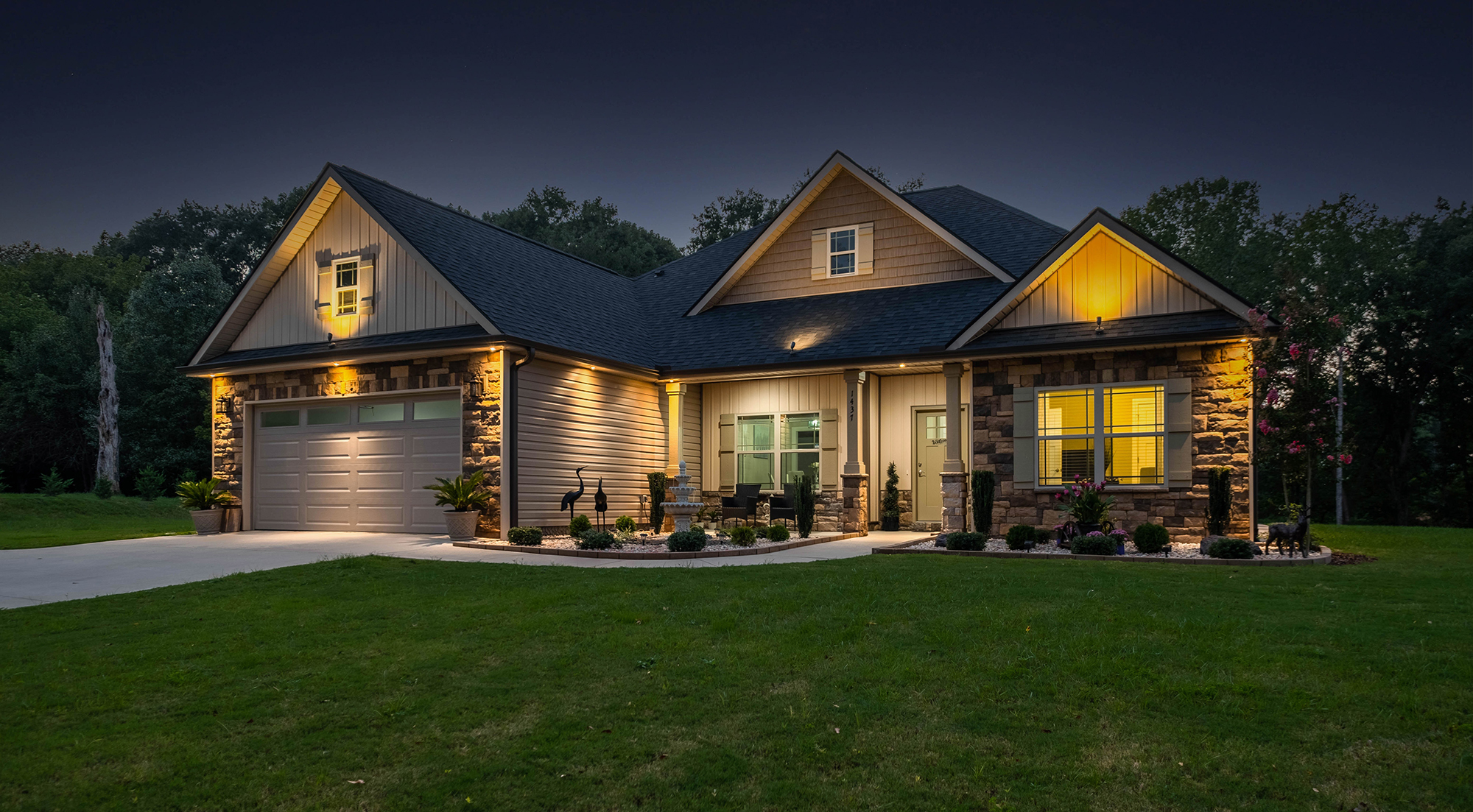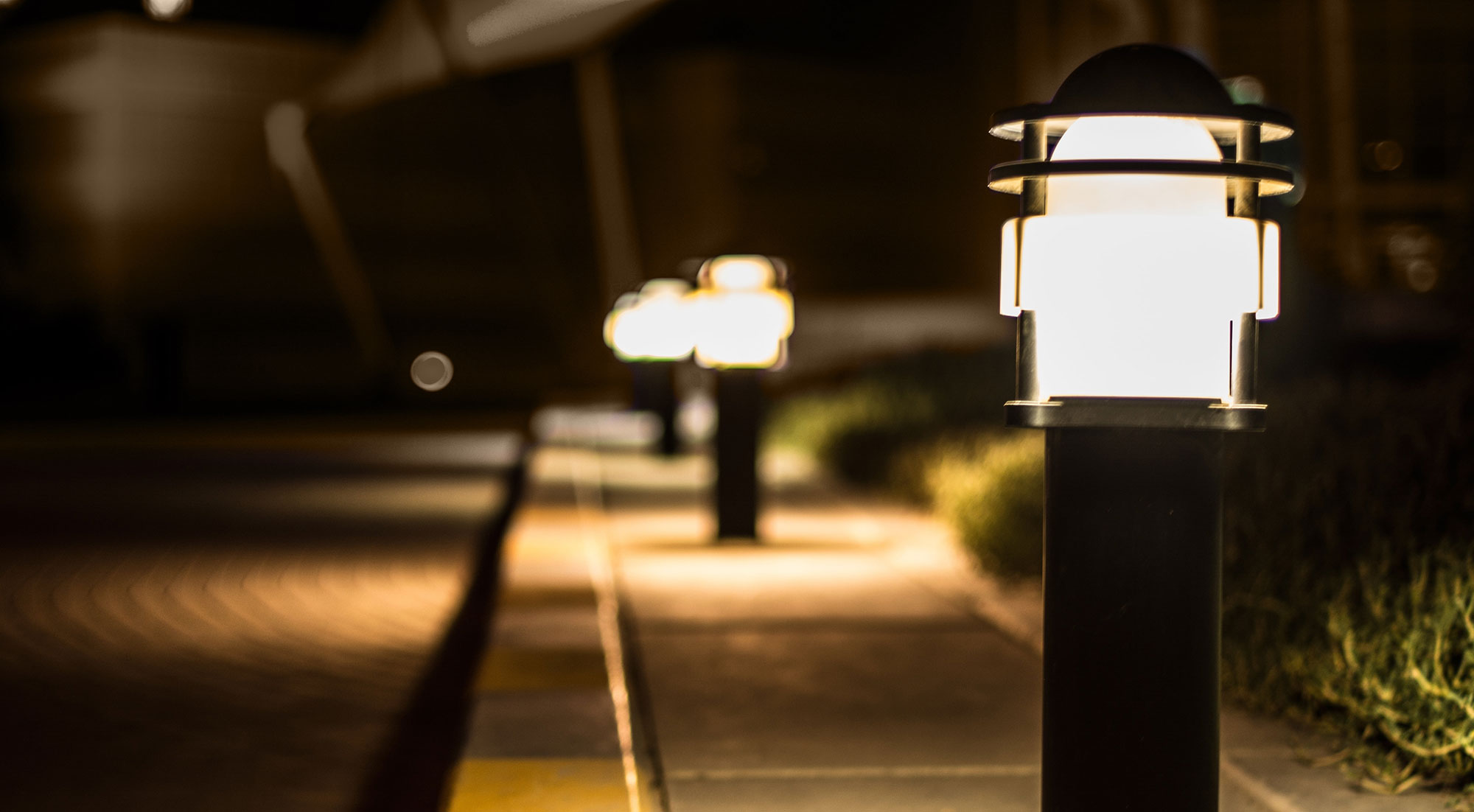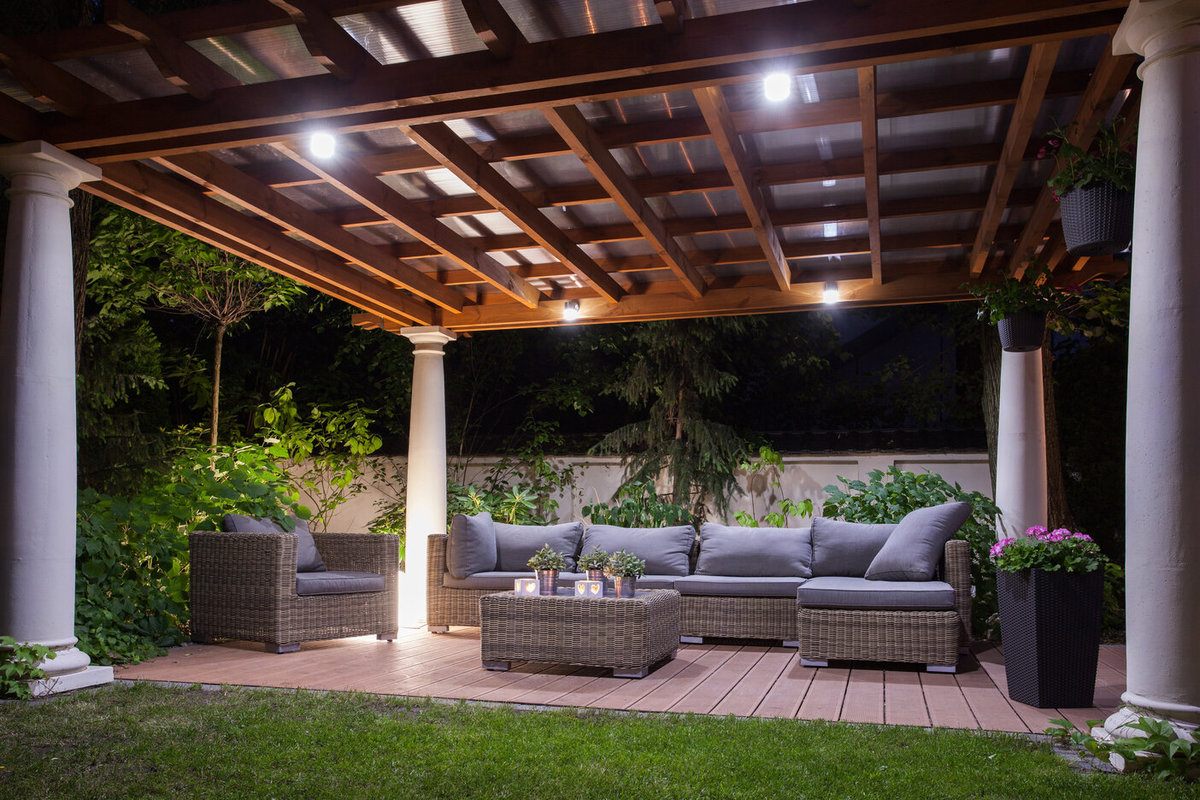
Outdoor lighting is one of the best ways to improve the curb appeal and safety of your home. If you spend a lot of time entertaining guests outdoors on a deck or patio, then it’s almost vital! We know the benefits, and love everything that an outdoor lighting system brings. But it all leads up to a very important question; how much does an outdoor lighting system cost?
The truth is, there’s no easy answer. Outdoor lighting installation costs can range anywhere between $2,000 and $20,000 depending on the situation. We’ve broken it down into three tiers for a typical 12-fixture install:
- Value Cost: $2,000 – $3,000
- Average Cost: $3,500 – $4,500
- Custom Cost: $5,000 – $6,000
The costs vary so greatly because there are so many factors that play into an outdoor lighting installation. To make things easier, we’ll break it down into five categories: location, type of fixture, power source, materials, and labor.
Outdoor Lighting Cost by Location
Whether it’s pathway lighting to guide guests to your door, well lights that wash over your garden’s retaining wall, or spotlights that bring attention to interesting details on your home; landscape lighting can accent many different aspects of your property. However, the size of your property and where the fixtures are installed can cause costs to vary greatly.
Fixtures that are harder to access or far from a power source are typically more expensive. It’s easier to install mushroom lights down your driveway than it is to add ambient lighting to a water feature. To add uplighting to a flower bed is easier than lighting up the pergola out back. Where you install your lights plays a large role in the overall cost.
Outdoor Lighting Cost by Fixture
There are so many different types of lighting fixtures on the market today. With products and techniques developed constantly, you can really get creative in terms of outdoor lighting design. Installation pricing for light fixtures will vary according to the quality, brand, and type of light.
Is the fixture standalone or does it need to be mounted to a hardscape? How powerful does the spotlight need to be to accent your yard’s massive oak tree? What kind of voltage does the fixture need to run properly?
It’s easy to miscalculate the type of fixture needed to bring your dream to life. To avoid any do-overs, we recommend speaking with an outdoor lighting professional. For more information on the different kinds of outdoor lighting solutions, check out our Outdoor Lighting Design Guide.

Outdoor Lighting Cost by Materials
As with indoor lighting, outdoor lights can be made from a number of materials. While sometimes an afterthought, it’s actually one of the most important features when comparing features. Normally want the aesthetic to match the features in the rest of your home, but it’s important to consider their durability as well.
Common materials used in outdoor lighting fixtures are (in order of cost) plastic, aluminum, stainless steel, copper, and brass. While it’s certainly cheaper to purchase plastic materials, the elements can wreak havoc on those products.
The type of bulb used will impact costs as well. Halogen lights have a lower upfront cost than LED fixtures, but need to be replaced much more frequently. LED lights will keep shining for up to 50,000 hours. Most contractors use high-quality LED lighting because they last longer and help maintain their warranty.
[mkb-tip]Livewire Tip: Our lighting services partner Coastal Source offers a maintenance-free system. We use materials made entirely of brass, including the ground stakes, ensuring your system is built to last.[/mkb-tip]
Outdoor Lighting Cost by Power Source
Lighting is also priced according to the source of power used for the lights. The usual choices are solar, battery-powered, and hardwired. All have pros and cons, and all have their own practical uses.
- – Solar-powered lights are a great, economical options for a DIY project. They don’t require wiring or connection to a power source and tend to skew on the cheaper side. Placement is limited to areas that receive a lot of sunlight, so they aren’t a complete outdoor lighting solution. They also come in a wide range of qualities – so do your research before purchasing.
- – Battery-powered lights work well in areas that are often wet or where electricity is not readily available. They’re relatively easy to use as well, as most come with a remote or can be integrated into your smart home system. However, their lifespan is normally shorter than wired or solar lights, and you’ll have to replace the batteries regularly.
- – Hardwired lights are by far the most common and preferred type of landscape lighting. They’re reliable, require minimal maintenance (if made with quality materials) and single transformer can normally power around 10 lights. They’re also the trickiest to install, and normally require underground wiring. To ensure it’s done properly and safely, we recommend you reach out to an outdoor lighting professional.

Labor Costs
If you hire a professional to install your outdoor lighting system, then plan for labor costs as well. Depending on the technical factors we outlined above, expect to spend around $250 to $500 per fixture for parts and labor on a standard installation.
While some companies offer just installation services, others offer outdoor lighting design as well. A designer will work with you on a plan to create the property of your dreams, and offer recommendations along the way. Company that offer these services normally come at a higher cost than those who don’t.
Whether you use a designer or create a plan of your own, a professional knows how and where to place the lighting for the best effect. Professionals also have greater access to high-quality parts including fixtures, LED bulbs, low-voltage transformers, and most offer a warranty.
Other Considerations
We covered the big ones, but there’s still so much to consider when budgeting for your outdoor lighting system. Before we wrap lets touch on a few quick hits:
Replacement Costs
As much as we’d like it to, nothing lasts forever. Parts, bulbs, and other components will eventually need to be replaced to keep your system running properly. When doing your research or working with a professional, take into consideration the products’ lifespan and replacement costs. Remember that a budget is as much about maximizing your initial investment as it is finding the lowest upfront cost. A few dollars more now can save you buckets down the road.
DIY vs Professional Installation
Certain lighting systems are DIY friendly, but they’re usually seen as temporary solutions. Decent solar garden lights are easy to install and cost around $25 each. Unfortunately they only last around six months and aren’t always reliable.
Department stores often carry other self-install systems as well, but you’re on the hook for all tools and labor for the project (this includes trenching, burying wire, making connections, mounting and programming the transformer, assembling fixtures, testing and troubleshooting the system, as well as designing project). The fixtures available to general consumers typically aren’t the highest quality. They tend to get beat up by the elements, let water in, and fail after a few years.
We suggest that any work involving additional wiring or electrical outlets be handled by a professional. For safety it’s important that those installations are handled properly and up to code. The last thing you want is for your project to turn from a DIY to a “Why Did I.”
[mkb-tip]Livewire Tip: Work with us worry-free! Coastal Source offers a lifetime warranty on systems installed and maintained by a certified dealer or installer.[/mkb-tip]
Electricity Usage
Electricity costs depend on the type of bulbs used, the amount of power they draw, and the cost of electricity in your area. For example, a typical Virginia resident pays a per-kilowatt-hour rate of about 12 cents. If you have a 12-watt halogen bulb, then the cost of operating it would be around 0.14 cents per hour (12 x 12/1000). The more lights you have, the more electricity you use for your outdoor lights.
Understanding how much it costs to run your lights helps you decide the best way to light up your space. We already mentioned some of the differences between Halogen and LED bulbs, and the cost to run each varies too. Halogen lights have an energy efficiency around $5.05 annually. On the other hand, LEDs are the least expensive to run at $1.19.
Learn how to bring it all together and create the perfect high-end outdoor lighting system by contacting Livewire or visit our Lighting Control page for further reading.










 CALL US 804.616.4156
CALL US 804.616.4156 BOOK APPOINTMENT
BOOK APPOINTMENT